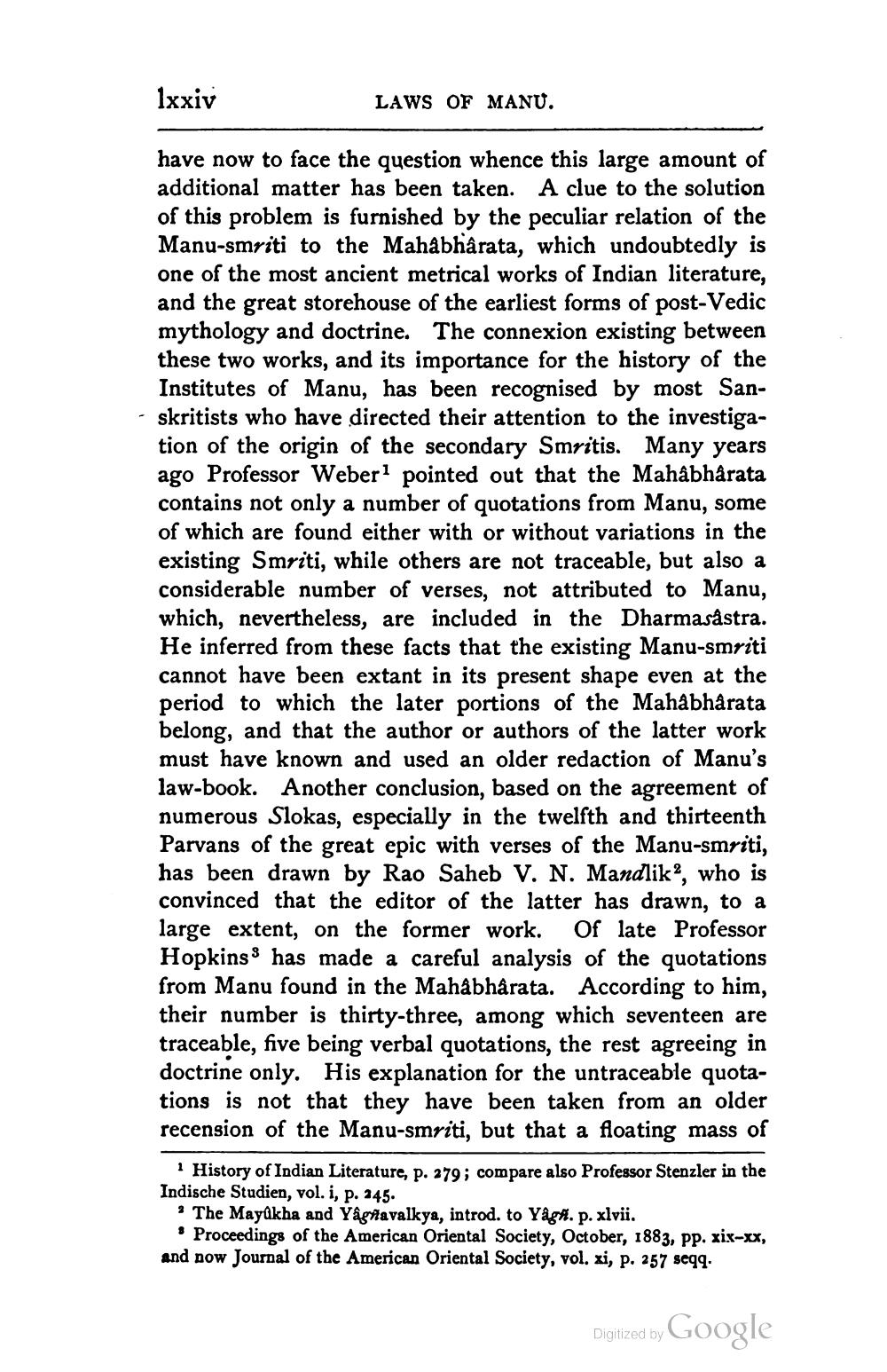________________
1xxiv
LAWS OF MANU.
have now to face the question whence this large amount of additional matter has been taken. A clue to the solution of this problem is furnished by the peculiar relation of the Manu-smriti to the Mahabharata, which undoubtedly is one of the most ancient metrical works of Indian literature, and the great storehouse of the earliest forms of post-Vedic mythology and doctrine. The connexion existing between these two works, and its importance for the history of the
Institutes of Manu, has been recognised by most San- skritists who have directed their attention to the investiga
tion of the origin of the secondary Smritis. Many years ago Professor Weber1 pointed out that the Mahabharata contains not only a number of quotations from Manu, some of which are found either with or without variations in the existing Smriti, while others are not traceable, but also a considerable number of verses, not attributed to Manu, which, nevertheless, are included in the Dharmasastra. He inferred from these facts that the existing Manu-smriti cannot have been extant in its present shape even at the period to which the later portions of the Mahabharata belong, and that the author or authors of the latter work must have known and used an older redaction of Manu's law-book. Another conclusion, based on the agreement of numerous Slokas, especially in the twelfth and thirteenth Parvans of the great epic with verses of the Manu-smriti, has been drawn by Rao Saheb V. N. Mandlik”, who is convinced that the editor of the latter has drawn, to a large extent, on the former work. Of late Professor Hopkins has made a careful analysis of the quotations from Manu found in the Mahabharata. According to him, their number is thirty-three, among which seventeen are traceable, five being verbal quotations, the rest agreeing in doctrine only. His explanation for the untraceable quotations is not that they have been taken from an older recension of the Manu-smriti, but that a floating mass of
? History of Indian Literature, p. 279; compare also Professor Stenzler in the Indische Studien, vol. i, p. 245.
* The Mayakha and Yágttavalkya, introd. to Yåga. p. xlvii.
* Proceedings of the American Oriental Society, October, 1883, pp. xix-xx, and now Journal of the American Oriental Society, vol. xi, p. 257 seqq.
Digitized by Google




